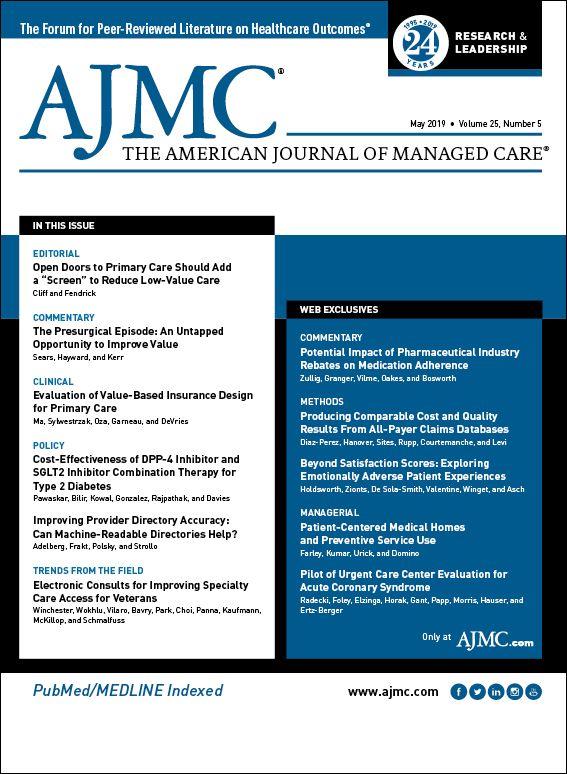- Center on Health Equity & Access
- Clinical
- Health Care Cost
- Health Care Delivery
- Insurance
- Policy
- Technology
- Value-Based Care
From the Editorial Board: Daniel B. Wolfson, MHSA
People generally recognize the importance of trust and how trust in the current environment is eroding. In fact, the healthcare system is the “biggest loser,” suffering the largest decline in trust among all institutions covered by Gallup polls.1 In 2015, only 37% of the public reported that they had a “great deal” or “quite a lot” of confidence in the medical system compared with 80% in 1975.
Trust is the heart and soul of medicine because it is the core of medical professionalism. Jo Shapiro, MD, from Brigham and Women’s Hospital in Boston, would state this equation in her lectures: Professionalism = Trusting and Respectful Relationships.
This simple but powerful notion of professionalism provided clarity for the ABIM Foundation’s work in the mid-2000s and for me as a student of professionalism, whose organization joined with others to produce the 21st century definition of medical professionalism, A Physician Charter. What is medical care but a series of relationships and interactions, mostly between people? Organizations are defined and driven by the many interactions among the people working within them. The quality of those interactions can develop or hinder trust and build professionalism or tear it down.
During the ABIM Foundation’s 2018 Forum on rebuilding trust, 150 diverse stakeholders came together to explore how to build trust within 11 dyad relationships in healthcare: patient and organization, clinician and organization, clinician and health plan, patient and physician, physician and physician, health systems and underserved communities, healthcare organizations and community organizations, teachers and learners, patient and physician in the era of artificial intelligence, clinicians and government, and the public and healthcare news reporting. Forum participants envisioned a healthcare system that created trusting and respectful relationships in these 11 relationships, with professionalism as the dominant change agent—all in service of improving quality and affordability.
Imagine this exercise put into practice more broadly, with multiple stakeholders able to sit down together, appreciate different perspectives, and arrive at conclusions for the betterment of the patient, the community, and the entire healthcare system. This would involve a shared vision and understanding of the design of a person-centered delivery system, information sharing, payment reform, measurement, and cost transparency. Discussion of value-based interventions explored in this issue of The American Journal of Managed Care® would be guided by strengthening the trust of patients and consumers, answering the proverbial question: Value for whom?
At the end of the day, how will patients and families benefit when we make changes in payment to recognize value, focus on health outcomes and not just revenue, reduce prices (particularly pharmaceutical prices), create cost transparency, and reduce unnecessary care and financial harm? Does the patient gain trust or experience mistrust in the healthcare system, and will they feel that all clinicians are working as professionals in the best interest of their patients and the public?REFERENCE
1. Lynch TJ, Wolfson DB, Baron RJ. A trust initiative in health care: why and why now? Acad Med. 2019;94(4):463-465. doi: 10.1097/ACM.0000000000002599.

Trends in Hospital Pricing for Vulnerable Emergency Department Users, 2021-2023
December 4th 2025Self-pay emergency department prices rose significantly from 2021 to 2023, especially at for-profit and system-affiliated hospitals, highlighting growing affordability challenges for uninsured and underinsured patients.
Read More
Integrated Care for Chronic Conditions: A Randomized Care Management Trial
December 3rd 2025The authors sought to understand the differential impact of payer-led community-based care management approaches on stakeholder-oriented outcomes for publicly insured adults with multiple chronic conditions.
Read More

